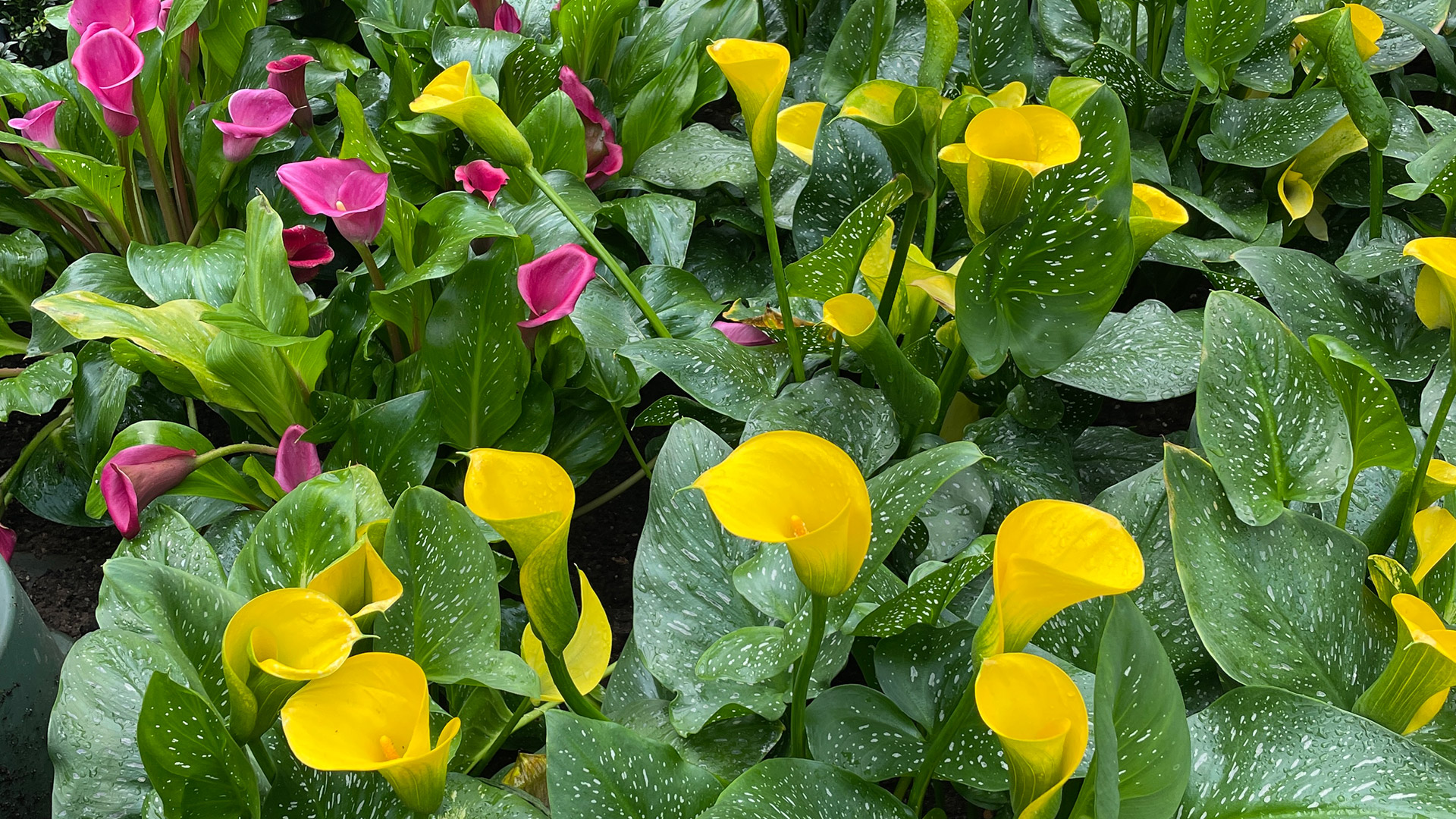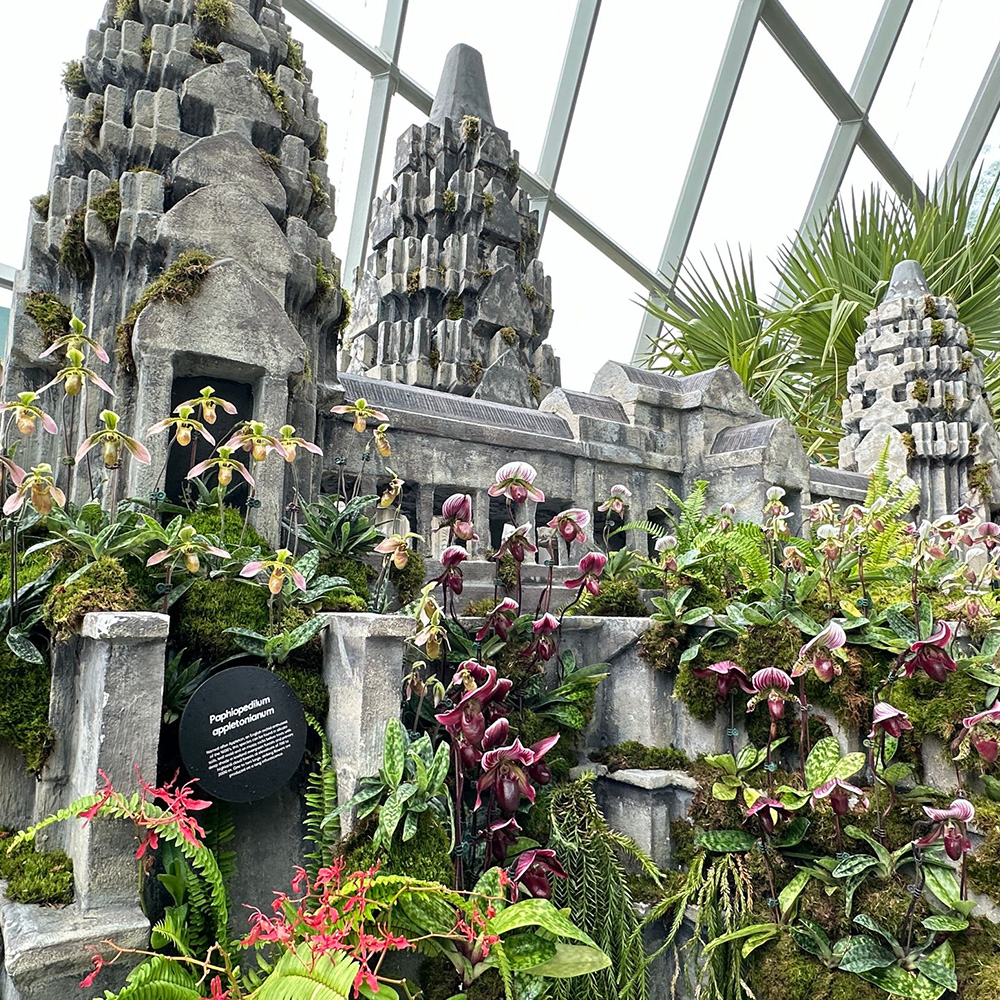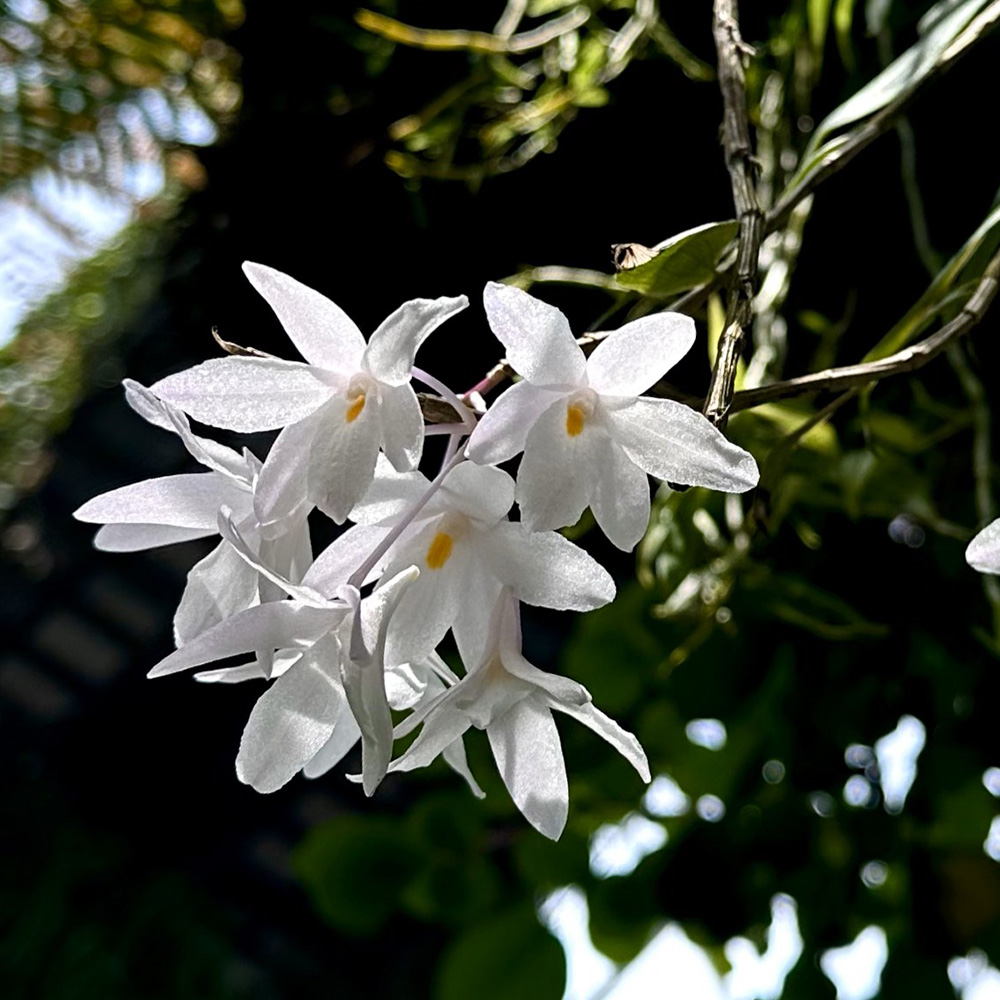Columnea minor
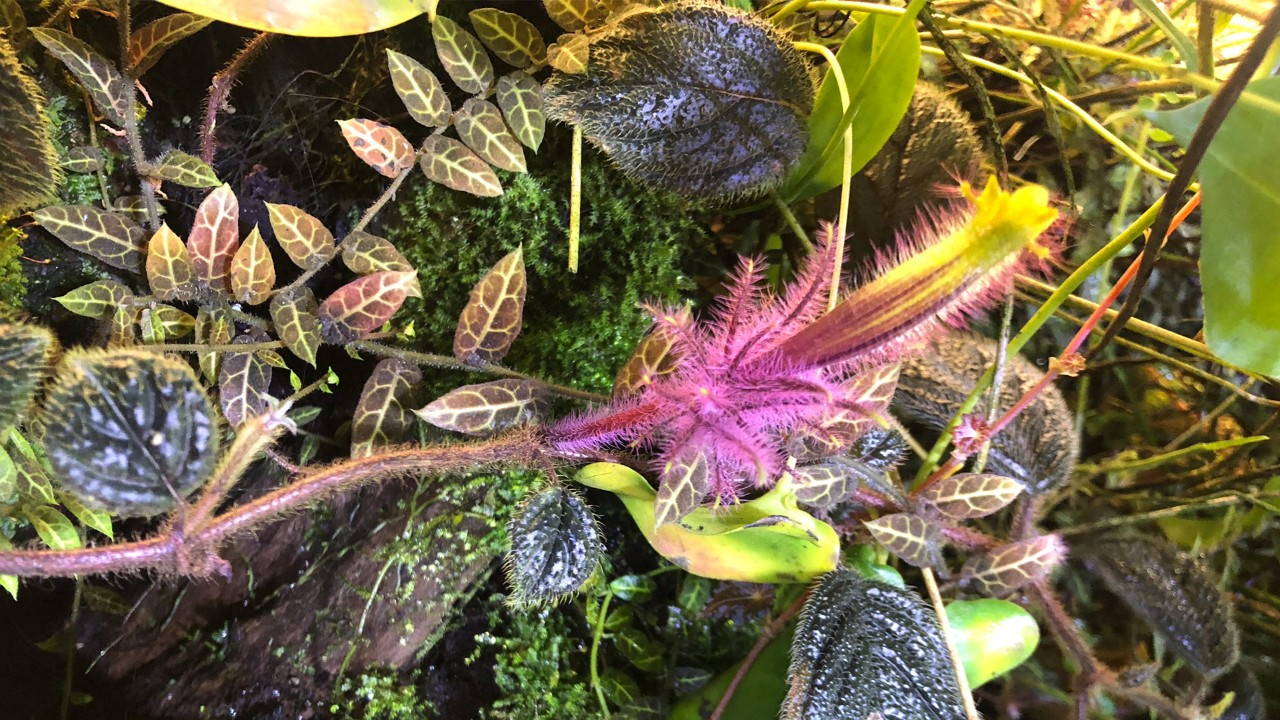
Looking at this scrappy but exotically eye-catching herbaceous perennial, it’s hard to believe that Columnea minor is in the same Gesneriad family as two very common tropical houseplants: the goldfish plant (Columnea gloriosa) and the African violet (Streptocarpus sect. Saintpaulia).
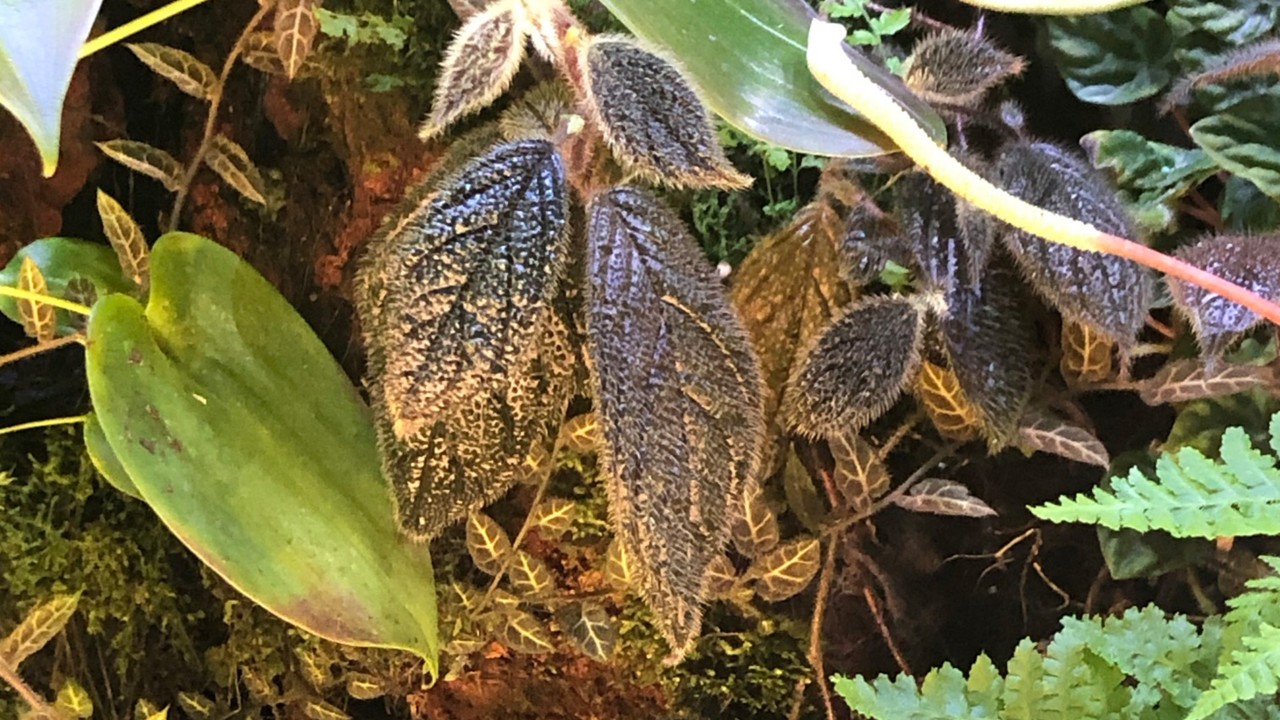 The dark purplish-green, deeply veined leaves of Columnea minor can vary in form from ovular to lance-shaped with a pointed tip.
The dark purplish-green, deeply veined leaves of Columnea minor can vary in form from ovular to lance-shaped with a pointed tip.
This particular Columnea species exhibits an amazing amount of natural variation in the color and shape of many of its organs, possibly indicative of hybridization. The leaves may vary in form from ovular to lance-shaped, while the outer surface of the corolla - the tubular fused petals - may be a purple so dark it is almost black, bright red, or even fuschia with a yellow tip, as shown in our specimen.
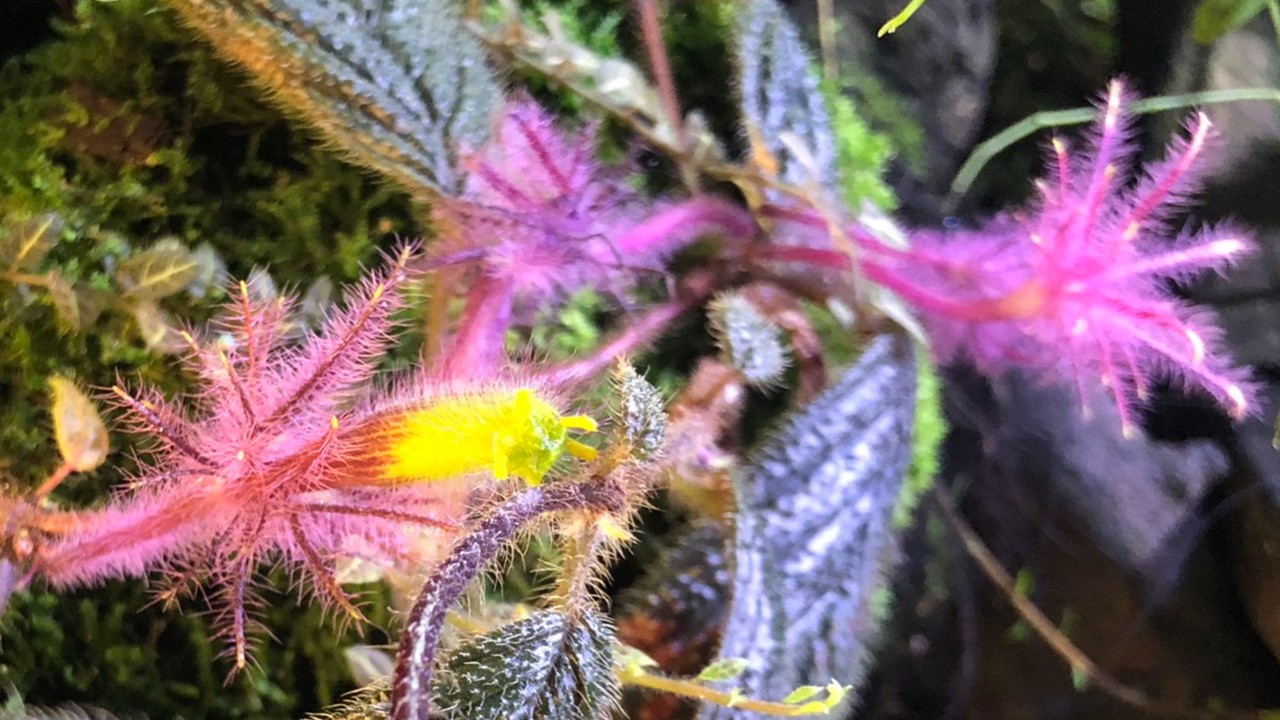 While the fuzzy pink ‘octopus’ on the right may look like a stunning flower, that’s actually only the calyx - the outermost whorl of floral organs. The full flower can be seen in profile on the left, with the pink calyx supporting the red and yellow corolla of petals that have fused into a single long tube, with the yellow anthers poking out at the top.
While the fuzzy pink ‘octopus’ on the right may look like a stunning flower, that’s actually only the calyx - the outermost whorl of floral organs. The full flower can be seen in profile on the left, with the pink calyx supporting the red and yellow corolla of petals that have fused into a single long tube, with the yellow anthers poking out at the top.
What looks like a fuzzy cheerleader’s pompom is actually the fimbriate or highly divided calyx or fused sepals, the outermost whorl of floral organs located below the petals, which in this genus are fused into a single long tube. The hairy calyces on different individuals of Columnea minor also may vary in length and color from a yellow-tipped pink, to a bright red, to fuchsia pink. The pink or red tubular corolla of this species is often associated with hummingbird-pollinated flowers, but the flowers are self-fertile and the natural pollinator has yet to be confirmed.
Native to Colombia and Ecuador, this herbaceous, pendulous epiphyte is found in the wild growing on tree trunks and branches in rain forests and montane forests. At Gardens by the Bay, however, you can find it growing at the lowest level of Cloud Forest, amongst the Secret Garden’s miniature orchid display.

Written by: Janelle Jung, Senior Researcher (Research and Horticulture)
A transplanted pake (Hawai'i-born Chinese), she's finding her own Singaporean roots. Every plant has a story, and Janelle helps discover and share these with colleagues and guests, hoping to spark a mutual plant passion! Ask her what plant she named her cat after!
